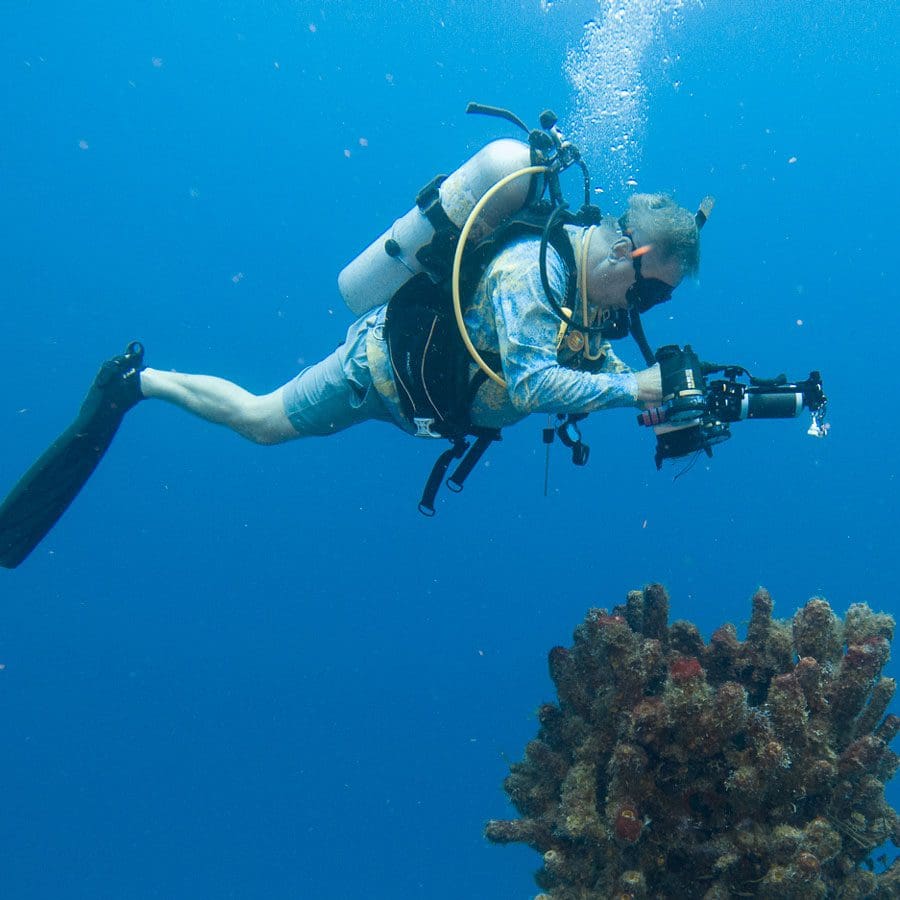Mastering neutral buoyancy is one of the most amazing experiences of scuba diving. You’re not rising, you’re not sinking, you’re stable and can control your position in the water effortlessly. And though every diving program stresses the importance of buoyancy and works with students to practice it, the best teacher is always experience based on the concepts you first learned in training.
Why is buoyancy so important?
Proper buoyancy makes scuba diving seem effortless. You glide through a magical underwater world and are transported to a place where you feel like you are part fish; meet the animals at eye-level and commune with them as equals. The closest analogy might be flying; gentle kicks propel you with minimal effort and allow you to forget the world above the water.
If that doesn’t convince you, there are multiple other reasons why buoyancy is a critical skill for scuba divers to master.
Safety: Proper buoyancy control is vital for managing emergency situations. For example, being able to control buoyancy can be essential if a diver needs to surface immediately in a safe manner or signal for help.
Control: Divers manage their ascent and descent in a strangely counter-intuitive manner: we deflate the BCD when rising and inflate the BCD when going down. And remember, your human lungs contribute more to your position than the air in the BCD.
Energy Conservation and Air Consumption: Maintaining neutral buoyancy enables divers to hover effortlessly in the water, conserving energy and reducing air consumption. This is especially important for extending dive time and exploring underwater environments more efficiently.
Protection of Marine Life: Good buoyancy control helps divers avoid accidentally contacting or damaging delicate marine ecosystems. By hovering above the reef rather than crashing into it, divers protect corals and other underwater habitats. That sandy bottom that you think looks empty is home to a myriad of creatures who won’t appreciate you sitting on them.
Equipment Management: Proper buoyancy control reduces wear and tear on diving gear. For instance, maintaining neutral buoyancy minimizes contact with the seafloor, which can prevent damage to fins and other equipment.
Training
All of the certification agencies offer special skills training in buoyancy. Check with any of our Out Scuba instructor members to find out what they offer. And don’t forget that Scuba Network has offered a 15% storewide discount to all card-carrying members of Out Scuba.
You can also practice your skills in pools and other confined water spaces if you have the equipment. Remember: the pressure change on the air bladder in your BCD is greatest in the first 30 feet of water. If you can maintain buoyancy in a swimming pool, well… the world’s your ocean!
While you are diving, be certain to introduce some skills practice into every fun dive. Showing off your hovering skills can be a great way to have fun with fellow divers and get in a little bit of practice as well. If you see newer divers who are struggling with their buoyancy, sometimes a gentle reminder to keep their fins off the bottom can save some marine beauties.
Photo credit: Christopher Duncan, Bonaire. © Copyright 2024 Andre Saade, All Rights Reserved Worldwide.

